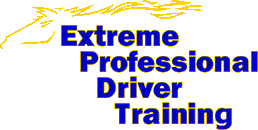Overview of Tractor-Trailer Driving School Course
 The swimming pool that is the trucking industry does not have a shallow end. The pool doesn’t have stairs or ladders leading into the pool. In fact, a fence surrounds it and the only access for novice drivers into the pool is via the diving board. Once in, many feel the sudden shock of “sink or swim.”
The swimming pool that is the trucking industry does not have a shallow end. The pool doesn’t have stairs or ladders leading into the pool. In fact, a fence surrounds it and the only access for novice drivers into the pool is via the diving board. Once in, many feel the sudden shock of “sink or swim.”
Despite this sharp learning curve, good truck driving schools go a long way to helping students to learn how to drive a truck. Ask the right questions, do your homework when selecting a school, and only accept one-on-one driver training.
For new students wanting to learn to drive a truck and earn their Class 1 licence (BC – Class AZ in ON) their first 2 or 3 days intimidate even the ablest of students.
student shift patternStudents must become competent in five major areas in a short duration:
- 1. Shifting
- Driving a non-synchromesh 18-speed transmission, commonly referred to a “crash box”.
- For the transmission to shift smoothly a driver must match:
- The engine speed, which turns the transmission gears; therefore the clutch must be out when the driver throttles up (rpms: revolutions per minute using the tachometer).
- The road speed.
- The gear.
- Turning
- Drivers must come to understand that it is the 50 foot plus trailer that dictates the path of the turn.
- In other words, students must reconceptualise space in an intersection and learn how to maximize that space to successfully turn the larger unit.
- Pre-trip inspection
- For an ICBC (Insurance Corporation of British Columbia) students must conduct a thorough and complete pre-trip inspection of the vehicle, its components and the units’ air brake system within 45 minutes
- The student must verbalize what component she is checking and indicate what could potentially be wrong with it:
- Most components are secure, not damaged, and not leaking (the latter if the component is filled with air or fluid)
- e.g. glass doesn’t have any chips, cracks or breaks
- The component works – low beams work or the driver’s door opens and closes from both the inside and the outside
- Dropped trailer Unhook/hook
- A student must demonstrate that she can safely disconnect and reconnect a semi-trailer
- o prevent damage to the unit, its electrical and air-lines, or landing gear the following sequencing must be followed
Unhooking
(L.A.P.)
(Landing Gear | Airlines & Electrical | Pin)
- Landing gear.
- Air-lines and electrical.
- Pin – release the locking pin.
Pull forward and lower the truck’s air suspension – confirm that the ground is supporting the weight of the trailer before pulling away.
Hooking
(P.D.A.)
(Pin | Dollies | Airlines & Electrical)
- Pin–back under the front of the trailer and raise the truck’s air suspension.
- Check that the trailer is at the right height for hooking.
- Back into the pin.
- Check the pin’s connection is secure.
- Conduct a tug test.
- Dollies (landing gear) – raise the landing gear.
- Air-lines and electrical are connected.
If it is a new trailer complete a complete pre-trip inspection.
When the trailer is coupled and uncoupled according to the order above, the trailer will never be dropped on the ground, or the air-lines ripped off, nor the dollies damaged.
Backing
Depending on the test centre, there are different requirements for backing, which can make this competency either a major or minor component of the curriculum. Some require a parallel park, others a sight side back around a corner, and others a straight back.
a. If a student has experience backing a trailer, the principals for backing a semi-trailer are the same
b. Turning the trailer – place your hand on the bottom of the steering wheel and push it in the same direction you want the trailer to go.
c. Following the trailer – put your hand on the top of the steering wheel and push it in the same direction to follow the trailer.
d. As a general rule, when a driver can see the dolly legs in the truck’s mirrors, she should begin to follow the trailer, otherwise, the turn is going to be too severe.
Little doubt, there is a lot to learn to become a truck or bus driver. And to compound the intensity of learning, students must often complete their course in a short duration due to financial constraints. At Extreme Professional Driver Training Inc. we go the “extra mile” to help our students succeed. Our 97% pass rate attests to our high calibre training and dedicated, professional driving instructors.
Our school can help you begin an exciting, challenging and rewarding career as a bus or truck driver.







